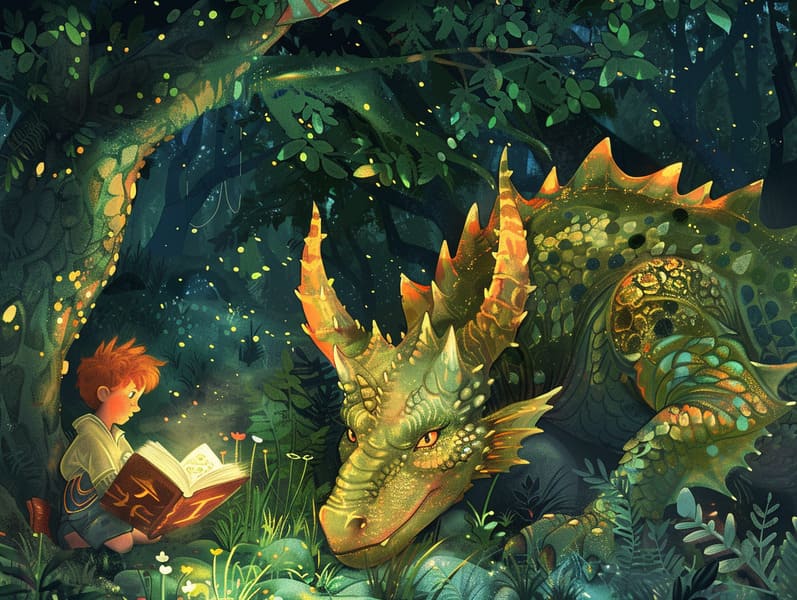
Famous fairy tales have historical significance. These narratives have been passed down from one generation to the next far before they were ever written down. They developed from a variety of civilizations, including Indigenous traditions. They were initially shared among adults, often carrying themes and messages reflective of the societal norms and beliefs of the time.
Jacob and Wilhelm Grimm, Jacob and Wilhelm (the Grimm brothers), were among the first to compile and release many of these beloved tales. Their volume, "Grimm's Fairy Tales," included classics like "The True Bride," "Little Brother and Little Sister," and "Snow White," which have since become classics in the world of traditional fairy tales. Similarly, the Danish author's fantastical narratives, such as "The Mermaid," and "The Little Duckling," have floated into hearts worldwide, establishing their place in the pantheon of timeless fairy tales.
Despite being ancient, classic fairy tales remain as impactful as ever, especially as bedtime stories for kids. These magical stories are now available in different formats, including richly illustrated books, captivating animations, and digital fairy tales.
Their lasting appeal can be linked to several delightful features:
Ethical Lessons: Classic fairy tales often whisper important moral lessons. Narratives like "The Story of the Boy Who Cried Wolf" teach the significance of sincerity, while "The Story of the Tortoise and the Hare" emphasize the benefits of steadfastness and meekness. These narratives offer young ones clear distinctions between virtue and vice, forming their moral compass in a mild yet significant way.
Kindness and Comprehension: Old fairy tales frequently showcase beings facing challenges and problems, stimulating young listeners to comprehend with their struggles and rally behind their triumphs. For instance, "The Tale of Beauty and the Beast" reveals the virtue of seeing beyond looks to realize the inner spirit of a individual, encouraging warmth and insight.
Cultural Comprehension: Many fairy tales are deeply ingrained in the cultural contexts from which they grew. Engaging with these stories can provide intriguing perspectives into different customs, fostering a sense of global awareness and appreciation.
Inventiveness and Imagination: The fantasy-filled elements in timeless fairy tales—talking beasts—boost children’s innovations. These narratives transport readers to fantasy realms, triggering fantastical thinking and a sense of marvel that persists a lifetime.
Timeless fairy tales are not only entrancing but also edifying. They act as spellbinding tools in nurturing various cognitive and emotional skills in children. When ancient fairy tales are told out loud, they strengthen linguistic abilities by presenting new words and intricate sentence structures. This practice also cultivates auditory skills and concentration, as the young pay close attention, ready to see what happens next.
Furthermore, analyzing the themes and characters of ancient fairy tales can enhance intellectual skills and analytical skills. Young ones are educated to pinpoint patterns, forecast, and understand cause and effect. These examinations also benefit the young express their thoughts and feelings, advancing their emotional intelligence.
In today’s digital era, the existence of online storybooks has made these tales more obtainable than ever. Internet resources and applications give extensive collections of classic fairy tales that can be browsed or listened via anytime, anywhere. Fairy tales recited are particularly common, supplying an immersive method for young ones to savor these magical stories. Voice books and read-to-me stories take characters and settings to life, often supplemented by delightful music and songs that enrich the tale journey.
The timeless appeal of timeless fairy tales lies in their ability to adjust to today's society while holding onto their main lessons. Contemporary adaptations of these narratives often include more inclusive characters and modern settings, making them relatable to today’s audience. However, the fundamental themes of guts, kindness, and honesty remain unchanged, continuing to move readers of all ages.
Timeless these guys fairy tales also offer a sense of serenity and closeness. They supply a well-structured narrative with a obvious beginning, middle, and end, often ending with the settlement of conflicts and the triumph of righteousness over wickedness. This regularity can be reassuring for kids, providing a sense of steadfastness in an shifting world.
Old fairy tales continue to enchant and inform new generations, maintaining their appeal and significance in modern society. As kids' bedtime tales, they confer a perfect blend of charm and enlightenment, furthering moral values, empathy, and creativity. The accessibility of online storybooks and the sought after status of fairy tales narrated assure that these ancient fairy tales remain attainable to new generations.
By holding onto and communicating these tales, we continue to glorify the rich tapestry of tales and cultural heritage. Whether you are seeing a richly illustrated book, perusing a virtual library, or hearing an sound book, the elegance of classic fairy tales is always within reach. These tales show us of the unwavering spell of stories and its ability to bond us across epochs and places.
If you are delving into a gorgeously illustrated book, seeing a online library, or listening on an read-aloud book, the enchantment of timeless fairy tales is always within reach.
These stories reveal of the enduring essence of tales and its ability to tie us across time and space, forming a connection that fascinates and enlightens alike.
Comments on “The Beginning of Mythical Fairy Tales with Its Persistent Grandeur.”